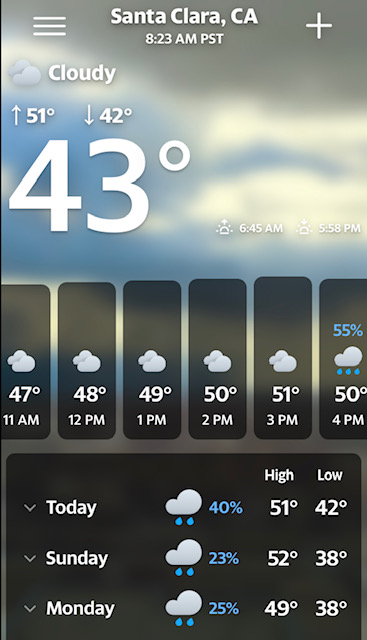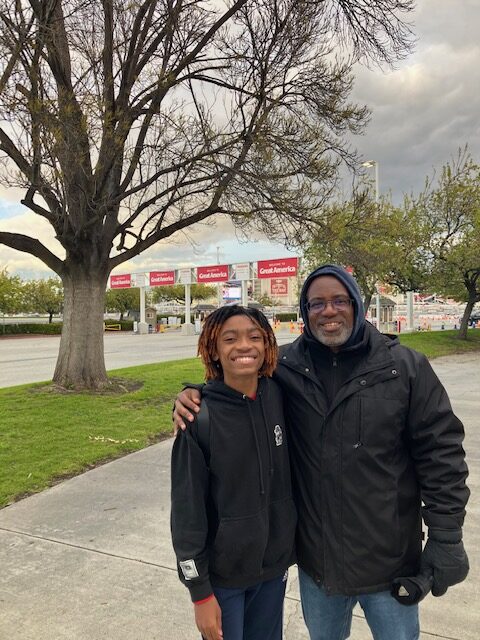How My Son Taught Me About Better Decision-Making
My son recently taught me about better decision-making. He wanted to celebrate his birthday at California’s Great America amusement park with his closest friends. An imminent winter storm complicated the planning. While he and his friends were determined to go almost no matter the weather, I was hesitant. I psyched myself up for braving the cold, but I drew the line at rain. The clash in values set us up for a messy decision-making process that was further complicated by my poor use of information. I hope this introspection on my experience will help parents align better with their children as well as demonstrate the importance of properly executing the steps required for good decision-making.
The Scenario
We targeted Sunday for the big day. On the Monday prior, the weather forecast included rain for Sunday. As a result, I moved the party to Saturday. However, I started to harbor some reservations given a forecast for rain on Friday as well. The bookends of rain suggested to me that the system could be underestimating the potential for Saturday rain. So, I prepared my son and his friends (through their parents) with an alternative plan to stay home and play video games and board games. The rules for Plan A (Great America) and Plan B (stay home) were simple and easy for everyone to reach agreement.
As the big day approached, the information landscape got cloudier, figuratively and in actuality. Suddenly, the forecast included a chance of limited rain on Saturday. Heavy rain arrived on Friday morning and the area even got a very rare dousing of snow in low-lying hills. Great America closed on Friday due to “inclement weather” although the rain was over by the time they would have opened. Suddenly, the odds for rain on Saturday “felt” higher. I started monitoring the forecast more closely. By the time I went to bed on Friday, the forecast tagged the chance of rain on Saturday at 50% with the rain concentrated between 11am and noon. Great America opened from 11am to 5pm on Saturday.
I woke up early Saturday morning expecting to make a final decision based on what I assumed would be a solid forecast for the day. Conditions worsened to include a 55% chance of rain from 11am to 1pm. Given the early hour, I waited before informing parents of the official switch to Plan B. Just as I got ready to send my message at 8:25am, I noticed the forecast suddenly shifted the forecast of rain to 4pm to 5pm (40% chance). I interpreted the change to mean that the system could bring rain at anytime during the day. Plan B stood firm.
I told my son the change in plans as soon as he woke up. He was incredulous and despondent. His information source told a different story than my source. I combined the information sources and concluded that the resulting uncertainty for rain still made Plan A untenable. My son strongly disagreed, especially given rain in the last hour of the visit did not matter to him. This contention set up a broken decision-making process…and the eventual fix.
The Decision-Making Process
The framework for making a good (quality) decision uses the Decision Chain, which is “the organizing principle of Decision Skills.” The following short video created by the Decision Education Foundation provides an excellent summary of the framework. I use the framework to demonstrate where my process of decision-making broke down.
Helpful Frame
I was very clear on the problem to solve. My son wanted to celebrate his birthday at California’s Great America with his closest friends. Accordingly, I was also clear on what needed to be decided. I knew when to make the decision: the morning of the party allowed maximum flexibility. Finally, I involved my son, wife, and the parents of my son’s friends in the decision. As the organizer, I held the final vote.
Clear Values
I also knew what I truly wanted: just as my son wanted, I wanted him and his friends to experience a memorable birthday party. The trade-offs to achieve this outcome were pretty simple given the tightly constrained requirements of the birthday party. However, my son and I had conflicting values. I had already made myself willing to tolerate as much cold as he and his friends were willing to tolerate for the sake of having fun. I drew the line at rain because being cold and wet made for an unbearable misery. My son (and his friends) cared a lot less than I did!
Creative Alternatives
In case Great America did not work out due to weather, I created an alternative plan. “Plan B” involved staying at home and playing video and board games. Plan A and Plan B were significantly different and enabled a clear path for decision-making.
Useful Information
This section was my weakest link. I primarily relied on the Yahoo Weather app for my forecast. My son and wife referenced Apple and Google weather. These information sources created a core source of conflict and confusion. They unnecessarily increased the uncertainty surrounding the decision. I also used the Great America website as a potential source of confirmation. The previous day, Great America closed its amusement park due to “inclement weather.” So I knew they had rules in place for determining when the weather was poor enough to make it undesirable to open. Great America never issued a closure notice Saturday morning, but I chose to discount that signal as affirming for a Saturday party.
The weather forecast drove the design of alternatives. Plan A was the easy decision for a sunny forecast. Plan B was the easy decision for a rainy forecast. The complication happened in between with the forecast uncertainties.
Sound Reasoning
In the moment, I believed I had very sound reasoning. However, upon reflection I realized the my reasoning was not as robust as it should have been. The weakest link of useful information leaked into weakening my reasoning. My highly negative valuation of being cold and wet led me to over-value the forecast which held out the prospect for my least desired outcome.
Commitment to Follow Through
I am a very resolute person. Once I make a decision, I am 100% committed. In THIS case, my commitment almost prevented me from responding to the changing information from the actual weather!
The Decision-Making Process

The weakest link determines the quality of a decision. The weakest link was my “useful information”, and it undermined my decision-making process. My son was intently focused on the Google weather forecast which corroborated the Apple weather forecast but contradicted the Yahoo weather forecast. As the sun started to shine over our house, I began to question my decision and the entire process. My wife drew the final straw when she reported a relatively “nice day” as she ran errands in town. I was running out of time, and I had to decide quickly whether to revert back to Plan A. I could only further improve my information with a costly trip to Great America and back (Great America does not provide a phone number to call a live human for help!). Such a move was too costly and even impractical.
My wife’s report snapped me back into the decision-making space I should have occupied in the first place. I more fairly evaluated the information at hand. A majority vote instead made more sense than an ad hoc blending of rain probabilities, especially given my deepening doubts about the quality of information from the Yahoo Weather app. I applied improved probabilities to the potential outcomes, and I informally calculated the “expected value” of the decision. Entering my son’s information space, I used a 20% chance of rain for 11am to noon. I used his valuation for the potential outcomes of a) Great America and no rain at any point = very high, b) Great America and rain at any point = not quite as high but still high, or c) stay home = low. This framing created fantastic decision clarity. Let’s go!
The Outcome
So how did everything turn out? I can report that I was quite grateful that I kept an open mind and allowed myself to rethink my decision-making process! While I suffered through very cold weather in the last hour of our visit, no rain ever came. My son and and his friends had a great time the whole way. While the outcome does not determine the quality of the decision, the outcome seemed to confirm the unreliability of the Yahoo Weather app relatively to Google and Apple. While a more statistically robust approach requires a larger sample of forecasts and actual weather, I am scarred enough to change my approach to sourcing weather forecasts.
My son taught me a valuable lesson in assessing the quality of information. He also taught me the importance of using the appropriate frame and value function for the decision at-hand. I allowed my own biases to blind me to the fatal weaknesses in my decision chain.
Lesson learned! I now hope you never replicate my mistakes.



Perspective: the end game for all that analysis? Those smiles! May all of our computations have such happy endings♥️